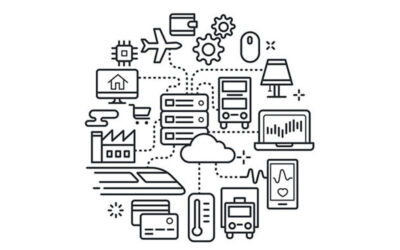Things around us are constantly changing from the simplicities of daily life to the evolving technologies we use. With the COVID-19 pandemic people’s lives and jobs have been put on hold while companies are trying to figure out how to cope with this extreme change. People now have to adapt to working at home and still stay connected with everyone they work with.
As the months pass people have new needs and working from your home office or even your kitchen table may not be the most ideal. Will working from home become the “new normal”? Will we ever be able to shake hands again? Questions like these are constantly on the minds of people who are now working from home.
This changes the game for people all over the world. Even though these changes are occurring doesn’t mean they are all bad, people now can save money on transportation to and from work and can even enjoy a nice meal at home for lunch. Yes, you may miss your work friends and socializing in the break room or around the water cooler but there are plenty of new ways to connect with the people you work with.
Moving forward the new ‘normal’ will consist of a lot of changes but with a little help and encouragement it’s nothing we can’t get through.
Increased Institutionalized Remote Working
Ever since the outbreak of COVID-19, people have been quick to declare the end of the open-plan office. Anxiety over the spread of germs makes these places unappealing to work in for many, and it’s much easier to practice social distance and good hygiene in the comfort of your own home. It seems like working from home is just a smarter alternative to traditional office work.
But since at least the 1970s, people have been predicting the end of the centralized office, says Andrew Wallace of The Conversation. So, this conversation is nothing new. Then again, the current pandemic has accelerated things, largely because so many had to let employees work from home or else close down entirely.
In May, we shared our thoughts on how remote workforces were an opportunity for change, but we didn’t predict the office space was doomed. “The blend of remote work and traditional office work is surely to be a much more diverse one moving forward,” we wrote. Businesses looking to adapt should instead “ditch their long-standing notions of what meetings, interviews, and other connections look like.” By embracing this new technology, they will be ahead of the curve, not behind it.
After all, working from home is popular, and while there’s no replacing a true face-to-face connection, people are still finding ways to be productive. It Is unlikely that we will drop to a pre-pandemic number of remote workforces even after a vaccine is developed. No, this trend is here to stay.
Reliance on Cloud Technology
In 2018, building the infrastructure to support cloud computing made up more than one third of all IT spending in the entire world. And that was before people even knew what the coronavirus was.
The movement to the cloud has been not unlike the California Gold Rush: In a relatively short amount of time, it seems everyone has migrated or started to migrate to the cloud—and with good reason. The technology offers some key advantages to buying and maintaining your own hardware and software.
One of these advantages lies in the ability of cloud technology to adapt, basically instantly, to changing demand for computing resources. This has an obvious benefit to any company which saw an increase in e-commerce or other web traffic during the pandemic.
The cloud allows these firms to scale up operations and prevent slowdowns with the click of a button.
“The covid-19 pandemic offers a unique opportunity for leaders to reassess business strategies, especially as the cloud has become an imperative for businesses of all sizes to accelerate their digital transformation,” writes MIT Tech Review.
They continue: “Cloud transformation will not only provide firms with capabilities to recover from the crisis more quickly, it might serve as strategic lever, allowing business leaders to rethink priorities and resource allocation.”
Acceptance of Online Collaboration Tools
One of the big winners during this pandemic has been Zoom, the video conferencing app that has been shrouded in controversy over security and privacy concerns. Zoom rose to prominence when, thanks to lockdowns, workers were forced to suddenly do their jobs from home instead of the office. Since that time, other big players have done some catching up. Microsoft Teams, Google Meet, and Facebook Messenger Rooms are three alternatives that have seen an uptick in usage.
As we’ve said, working from home is a trend that is here to stay—and these tools will stick around with it. Norms have crumbled quickly. A lot of resistance that there might have been adopting these apps has fallen away as they’ve become a normal addition to so many workforces. In a world where employees may suddenly all have to depart the office again, you can’t afford not to have some audio or video software on hand. And as workers get used to their features and interfaces, most of which aren’t all that complex, they’re going to stark liking these apps. And then boom—they’re here for good.
Cybersecurity as a Priority
According to an Adobe survey, 70% of CIOs expect to invest more in cybersecurity in the immediate future. One reason for this is a renewed focus on business resilience and data protection. There’s nothing like a worldwide pandemic and drying revenue streams to shock managers out of their stupor and ask, “What can we do to keep running?”
The answer has been spending on key cybersecurity solutions like training, VPNs, and endpoint security. After all, one of the biggest vulnerabilities has been the mass migration to working from home. How do you protect your security-illiterate employees when they’re working remotely? That’s a major challenge during a pandemic.
Cybersecurity will remain a priority so long as the previous three trends stick around: remote work for the reasons just listed, and cloud tech and collaboration tools because new gadgets need to be protected. And if you had any doubts, just take a look at the huge demand for—or rather, the shortage of—cybersecurity skills.
Moving Forward
People haven’t been using the term “new normal” lightly. There’s a lot of drastic changes that are happening in the world, especially in the world of business. As we’ve seen, there are some pretty significant changes transforming your priorities as a leader. With some of these new priorities—cybersecurity, for instance—it makes a world of difference having an experienced professional on your side: a partner who won’t give up no matter what’s going on in the world. That’s us. You can reach out here or by phone at (508) 453-4700, and we’d love to share how we can help this post-pandemic world a little less stressful!



